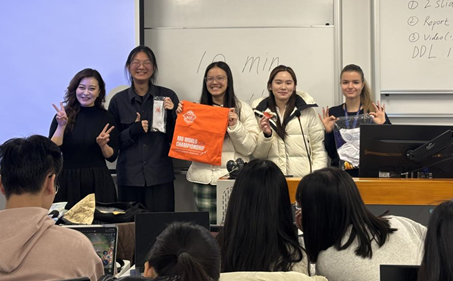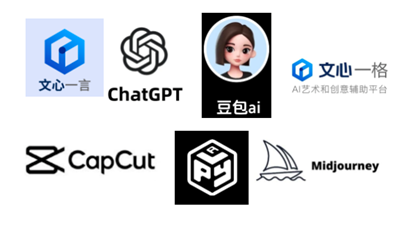Amid the tide of the digital intelligence era, international students enrolled in Zhejiang University’s Global Communication course have pioneered a fresh perspective on international communication through AI-driven innovations. Recently, the course unveiled a series of AI-generated video works created by these students, demonstrating the seamless integration of digital technology and cross-cultural communication. These projects offer innovative approaches to telling Chinese stories and amplifying global voices.
Course Background: From Niche Offering to International Brand
The Global Communication course was officially launched in 2020, under the incubation of the Center for Cultural Communication of China Foreign Languages Publishing Administration , College of Media and International Culture of Zhejiang University, and the International Communication Innovation Center of Artificial Intelligence, and is offered by College of Media and International Culture of Zhejiang University and the International Business School. Led by Professor Zhao Yupei, Vice Dean of the School of Media and International Culture, Hundred-Talent Program Researcher, and doctoral supervisor, the course centers on the bidirectional exchange of "Chinese culture going global" and "localization of international culture." It explores distinctly Chinese themes such as Hanfu culture, Chinese culinary traditions, and domestic gaming culture, while also addressing emerging topics like esports, digital avatars, and the metaverse. After five years of development, the course was recognized as a provincial first-class program in 2023. Its enrollment has surged from an initial cohort of 6 students to 85, now serving 216 students from nearly 30 countries. Consistently rated as "the most beloved specialized course" by students, it has evolved into an internationally renowned academic brand.

Ms. Zhao Yupei (first from left) and her students in the classroom
Cultural Reflections: Cross-Cultural Digital Storytelling Through International Students' Eyes
Embracing the global AI revolution, the Global Communication course has innovatively transformed its assessment methods by integrating AI tools with international communication practices. The final project, "AI-Assisted Video Creation," encourages students to form cross-cultural teams and leverage AI technologies to produce video works that blend their cultural backgrounds with communication theories, charting new pathways for global storytelling.
The latest collection features eight AI-enhanced videos spanning genres such as drama, original animation, documentary, and advertising. Themes range from cultural tourism and environmental innovation to emotional narratives and historical education. Creators from Thailand, Malaysia, Indonesia, Russia, India, and over 10 other countries infused their works with multicultural perspectives, revealing the diverse possibilities of international communication.
How do foreign students reinterpret Chinese landscapes? The Thai team’s 10 Places You Must Visit in China provides an answer. Combining ChatGPT-optimized scripts with Ai.invideo’s visual frameworks, they reimagined China’s iconic sites—the Terracotta Army’s grandeur, the Forbidden City’s majesty, and the Great Wall’s winding splendor—through a poetic AI lens, offering global audiences an immersive journey into Chinese culture.

Film: 10 Places You Must Visit in China
Can environmental issues transcend cultural barriers? The Indonesian team’s EcoGreenPen presents an innovative response. Aligning with the UN Sustainable Development Goals, this conceptual ad for an eco-friendly pen employs multilingual AI tools to make sustainability accessible across cultures. The work highlights developing nations’ youth engagement in global environmental governance and showcases AI’s role in advancing cross-cultural dialogue on sustainability.

Film:EcoGreen Pen
In Grey Whisker’s Journey, Southeast Asian students adopted Chinese short-video storytelling techniques to craft a heartwarming tale of an aging cat seeking life’s purpose. Using AI-generated expressions and movements, they embedded Eastern values of resilience into a simple yet poignant narrative. The fusion of Chinese short videos’ emotional resonance with Southeast Asian cultural elements exemplifies digital technology’s power to foster mutual understanding.

Film: Grey whisker's journey
The Last Bueno represents a cross-cultural cinematic experiment by Malaysian and Russian students. Merging Eastern and Western film aesthetics, this short film humorously explores two strangers’ rivalry-turned-sharing over the last chocolate. Tools like Stable Diffusion and Rendora.ai helped create a distinct visual style that blends comedy with humanistic themes, reflecting global youth’s shared pursuit of artistic innovation.

Film: The Last Bueno
Other notable works include The Starbucks CEO’s Story, At The Touch of Love, American Revolution, and The Little Star That Stayed, which explore corporate culture, emotional philosophy, historical education, and fairy-tale narratives through multicultural lenses.

Other films
Intelligent Creation: Multi-Tool AI Ecosystem Reshapes Global Communication
Technically, the projects innovatively integrated 15 AI tools: 5 large language models (ChatGPT, ERNIE Bot, Doubao, Kimi, Wenxin Yiyan), 3 text-to-image generators (Midjourney, Stable Diffusion, Wenxin Yige), and multiple video tools (VEED.io, Play.ht, Ai.invideo, CapCut, Rendora.ai). The Chinese-to-foreign tool ratio stood at 6:7, with applications spanning documents (35%), video (40%), and images (25%).
Students broke free from single-platform limitations, forging collaborative workflows across tools. By establishing a cohesive "text-image-video" AI production chain—such as ChatGPT for ideation, ERNIE Bot for localization, and CapCut for editing—they demonstrated a groundbreaking model for international communication.

AI Tool Demonstration
Educational Impact: Cultivating Digitally Savvy Cross-Cultural Communicators
Through its "theory-practice-innovation" pedagogical framework, the Global Communication course offers an effective pathway for nurturing interdisciplinary talents with cross-cultural communication skills, global vision, and innovative thinking. Its three-dimensional teaching methodology stimulates students’ creativity while fostering their ability to innovate "in the moment."
As globalization deepens and digital technologies advance, China’s international education is entering a new phase. The AI-driven innovations of Global Communication not only redefine training for global communicators but also contribute educational wisdom to building a community with a shared future for humanity.
_______________
Yupei Zhao, Director of AI International Communication Innovation Center (co-founded by China International Publishing Group (CIPG) Cultural Communication Center and College of Media and International Culture, Zhejiang University), Deputy Director of the Zhejiang University International Communication Research Center, and Associate Dean of College of Media and International Culture, Zhejiang University.